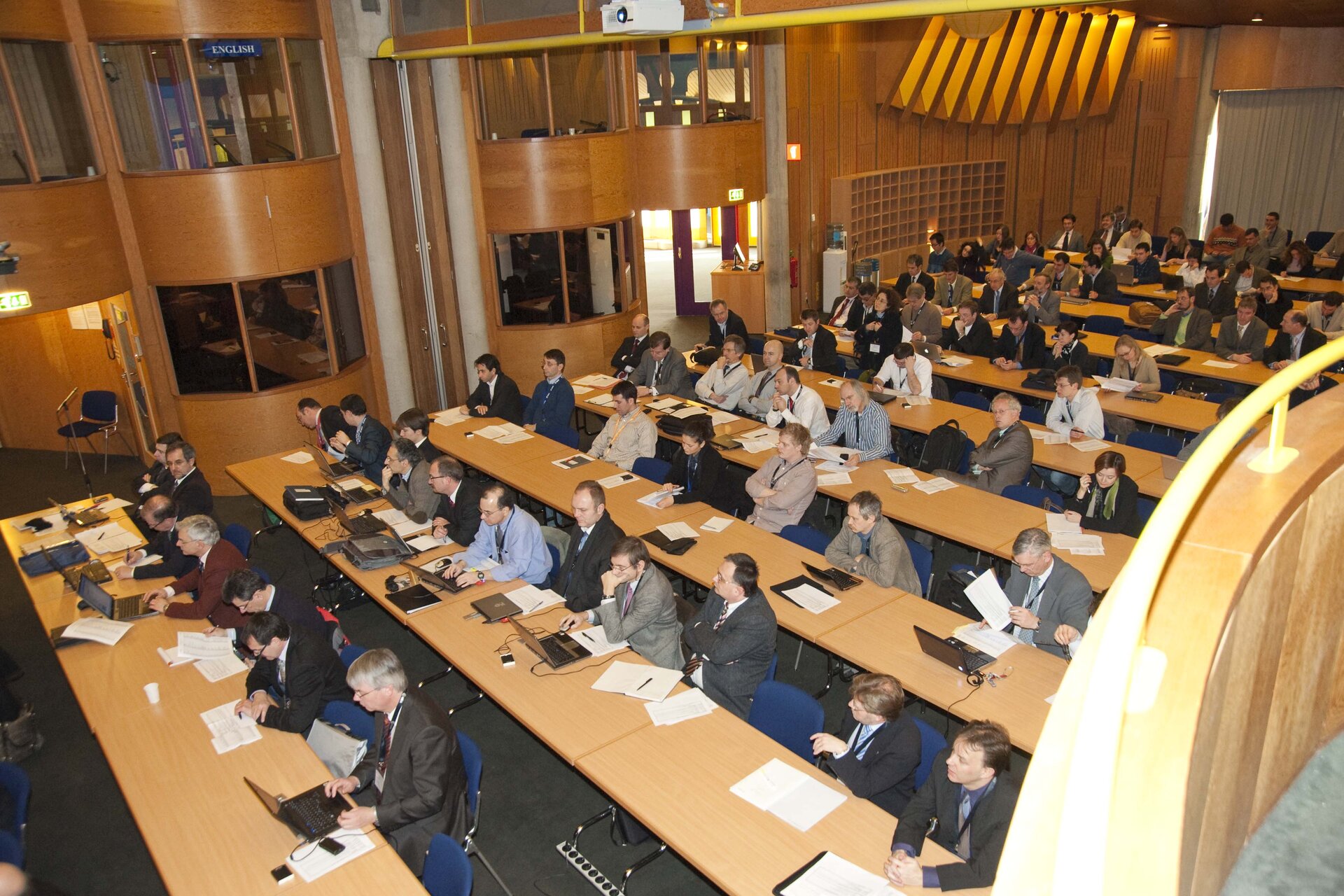First 'Techno/Innovation Days' explore how ESA innovates
At a time when Europe’s space industry is under increased pressure from foreign competition, ESA’s long-standing support for technological innovation is more important than ever. So how is the Agency performing on this front? Last week more than 200 people had their say.
The occasion was the first of ESA’s Techno/Innovation Days, a chance for ESA, industry and academia to debate the theory and practice of innovation for space, and share information on the latest technology trends and achievements.
The subject of the Days was “innovation, innovation, innovation” said Michel Courtois, ESA Director of Technical and Quality Management, as he opened the event, which took place at ESTEC, ESA’s technology research centre at Noordwijk in the Netherlands on 17–18 February.
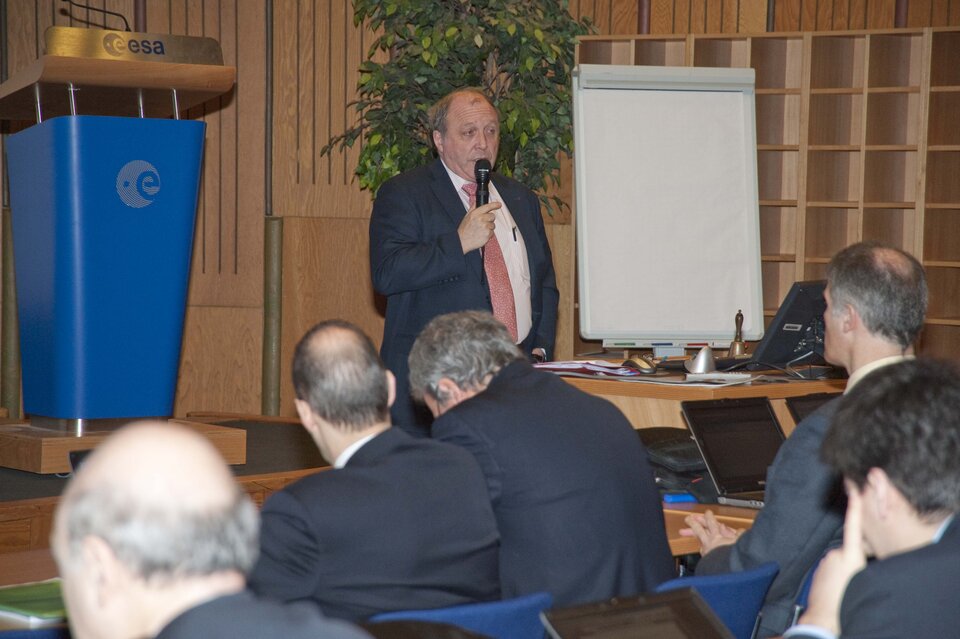
European satellites are getting smarter, delivering a higher performance per kilo in orbit, but this does not happen by itself. Technological development is one of ESA’s main streams of activities and innovation one of its key objectives - dictated by the needs of the missions, the competitiveness of industry and the specifics of space. Innovation combines the concepts of novelty and usefulness.
The Techno/Innovation Days sought to examine the idea of innovation in more detail, recount how it is carried out in real terms and look for pointers for improved performance.
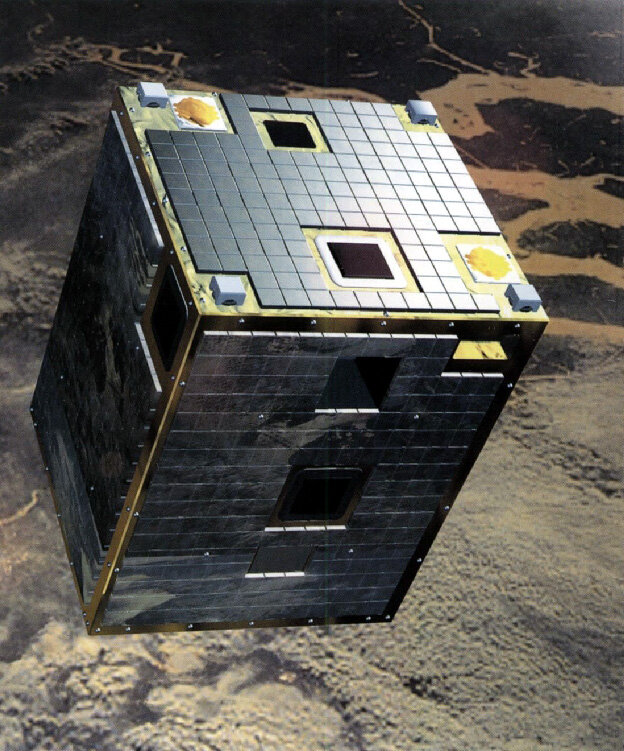
Alberto Tobias, Head of ESA’s Systems, Software and Technology Department, noted innovation in techniques, technologies and products, processes, markets and business models. He made the point that Europe’s space industry faced both hi-tech and lower-cost challenges from foreign rivals: “We need to be better where we cannot be cheaper – innovation is part of the solution, although it is not the sole ingredient of competitiveness.”
He added that support to product development is at least as important, the process of evolving a new technology until it is ready for operational use. Often, promising ideas were developed to prototype stages, but fell prey to what was described as a ‘death valley’ between the prototype and flight-ready stages.
ESA is attempting to change this in various ways, including its product-supporting General Support Technology Programme (GSTP) and a new emphasis on in-orbit demonstration opportunities for promising products, most notably through its Proba series of satellites. In 2001, the first Proba carried an experimental lithium-ion battery, now the standard technology for satellites. Future missions could test similarly game-changing technologies.
Innovation under debate
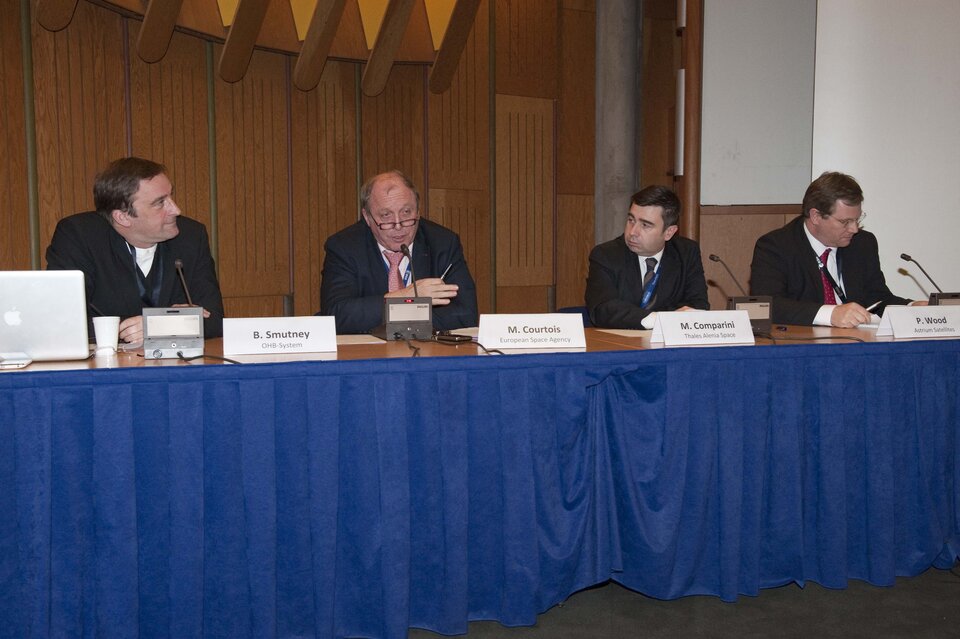
The first day saw a discussion on innovation for space, with Director Courtois debating with major European space firms OHB, Thales Alenia Space and Astrium.
Innovation is an expensive business, but flat R&D budgets during an economic downturn should not be an excuse for less inventiveness, remarked Berry Smutney, Chief Technical Officer of OHB: “Good ideas happen without funding because they are made in someone’s head. We need to have an environment that encourages creativity for our engineers – that extends to quality engineering too, which shouldn’t be the enemy of innovation but instead helps to innovate industrial processes for reduced mass, power and cost.”
Massimo Comparini, Vice President for R&D and product policy at Thales Alenia Space, stressed that overall innovation levels were dictated by the budget envelope but better use could be made of available resources through enhanced information flows: “With the fast evolution of technology, It’s not always easy at the system engineering level to capture all the potential of new technologies.”
Europe needs to fight hard to keep its position, but we should not be defeatist
The importance of paying attention to technology developments in non-space sectors was also emphasised. Space is a small sector in overall terms – there is always the potential that someone has solved a different problem in a way that invites space ‘spin-in’. But this has to be done in a way that does not bring too much risk into the development process – the extremely harsh environment that satellites end up working in always needs to be kept in mind.
“Europe needs to fight hard to keep its position,” concluded Patrick Wood, Chief Technical Officer of Astrium Satellites. “But we should not be defeatist… we have a fantastic heritage and our R&D has proved very successful. There’s a great future out there and we need to make sure we don’t hand it over to somebody else.”
Focus on breakthroughs
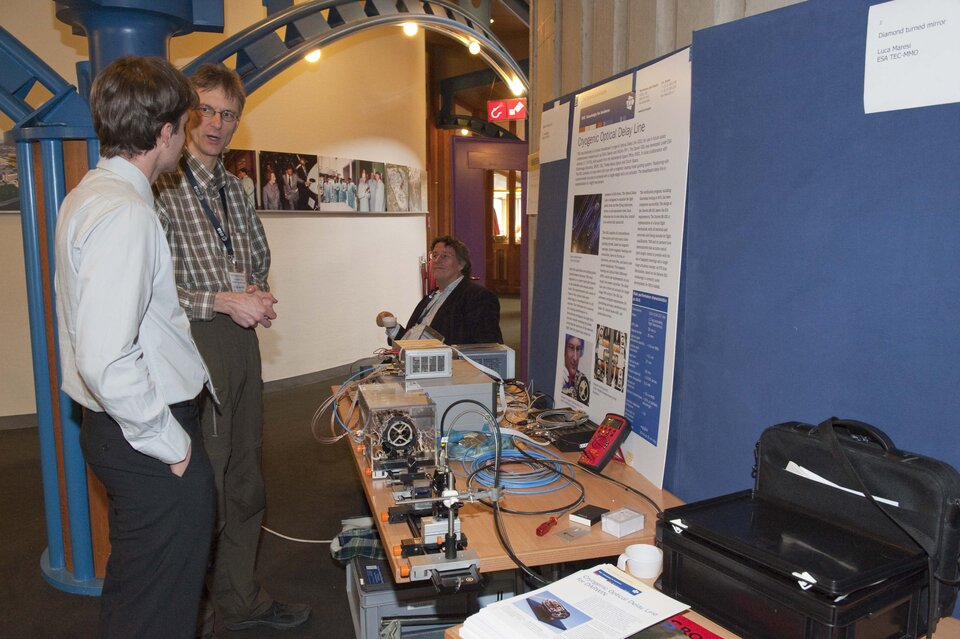
The second day was devoted to detailed presentations of recent technology breakthroughs by Techno/Innovation Days participants. They included:
Early results from ESA’s major GREAT (GaN Reliability Enhancement and Technology Transfer Initiative), which seeks to develop space-hardened gallium nitride components to deliver a tenfold boost in radio amplifier power. Wafers from ESA’s initial production run are in testing, with the hope of securing an early flight aboard Proba-V in 2012.
Examples of micro-electro-mechanical systems (MEMS) for attitude and orbit control systems, to deliver gyro-, star- and Sun-sensors-on-a-chip were presented by UK-based SEA and Italy’s Selex Galileo. Sweden’s Nanospace also showcased MEMS devices for propulsion, including a complete miniature engine, due to fly on the national Prisma technology demonstration mission.
- Germany’s ESE GmBH presented a fluorescence-based biosensor for future Mars missions. The compact BIOCA device, just 90 grams, shines an LED to illuminate a wide range of chemical ‘biomarkers’ linked to present or former life, with a sensitivity equivalent to detecting a pinch of salt in Lake Constance, Europe’s second biggest lake.
- The Dexterous Robot Arm (DEXARM), designed and developed by a Selex Galileo-led team on ESA’s behalf, is comparable in size, force and skill to a human arm. ‘Slaved’ to a human operator, it can increase the effectiveness of astronauts performing maintenance on the extended-lifetime International Space Station.
- Ultralight materials for space, using inflatable structures incorporating a special polymer that hardens into a solid self-supporting material within hours. This Astrium-developed ‘gossamer’ technology is suitable for satellite booms up to 10 m long, as well as reentry shields, airbags or even long-term habitats.
- Optical wireless for internal spacecraft communications, seen as a means of reducing the number of wires and connectors inside a space system while increasing its functionality. Known as OWLS (Optical WireLess intraSpacecraft communications), the technology has been developed by Spain’s Instituto Nacional de Técnica Aeroespacial (INTA) with ESA support.


